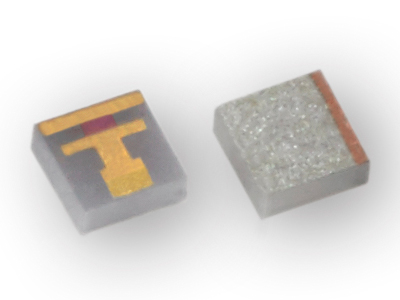Fixed attenuators are available in 0.1 to 400 W versions, covering DC to 50 GHz applications and offered in 0 to 30dB values. Our attenuators are available in several package styles including chip, tab & cover, flange and coaxial models for use in both low and high power applications. These products are available in standard commercial product as well as high reliability versions.
- Substrates - BeO, AlN, and Alumina
- Commercial and High Reliability Product Lines
- Frequency Range from DC to 50 GHz
- Attenuation Values from 0 to 30dB
- Space and Military Qualified
- Surface Mount, Wire-Bondable and Coaxial Configurations








